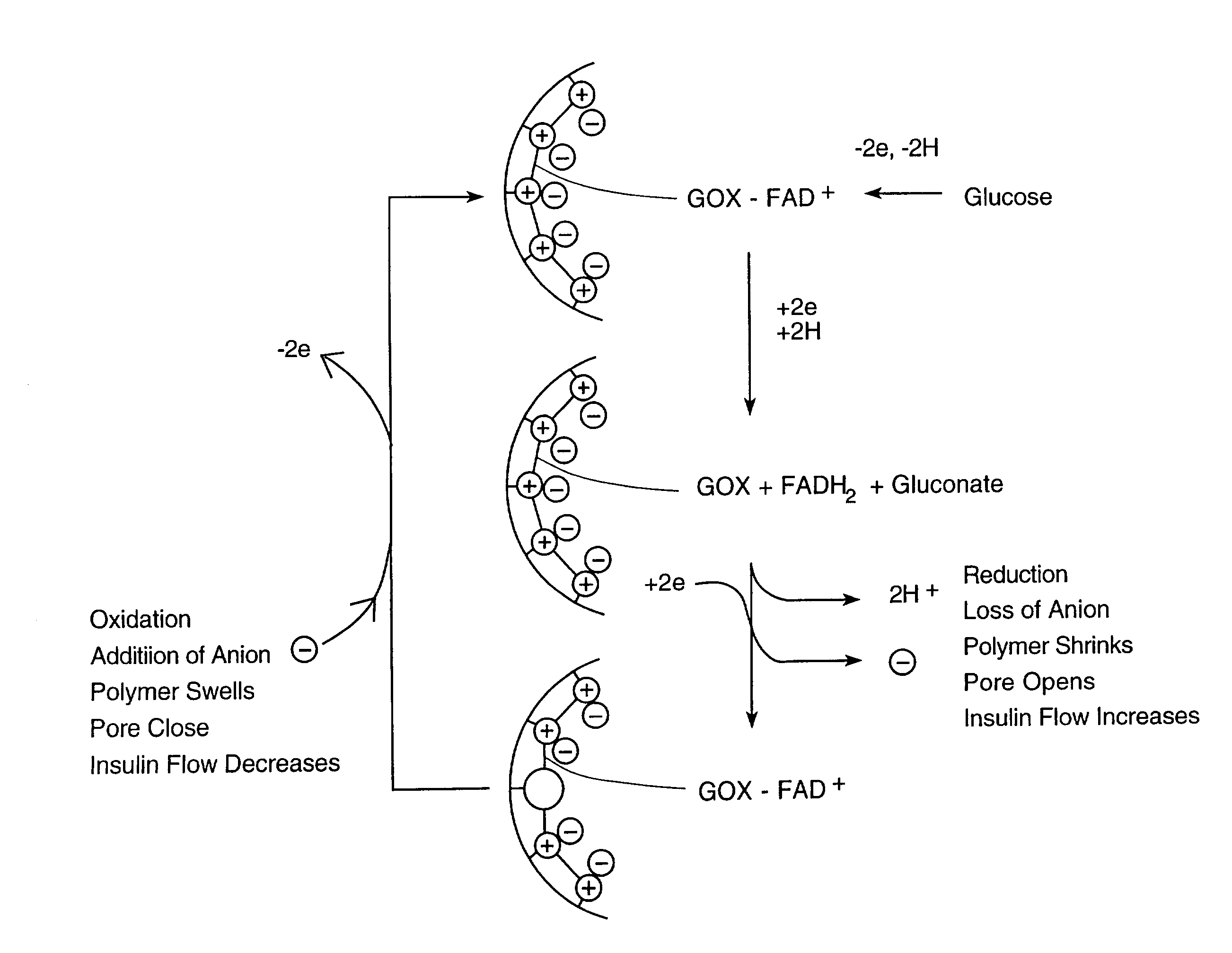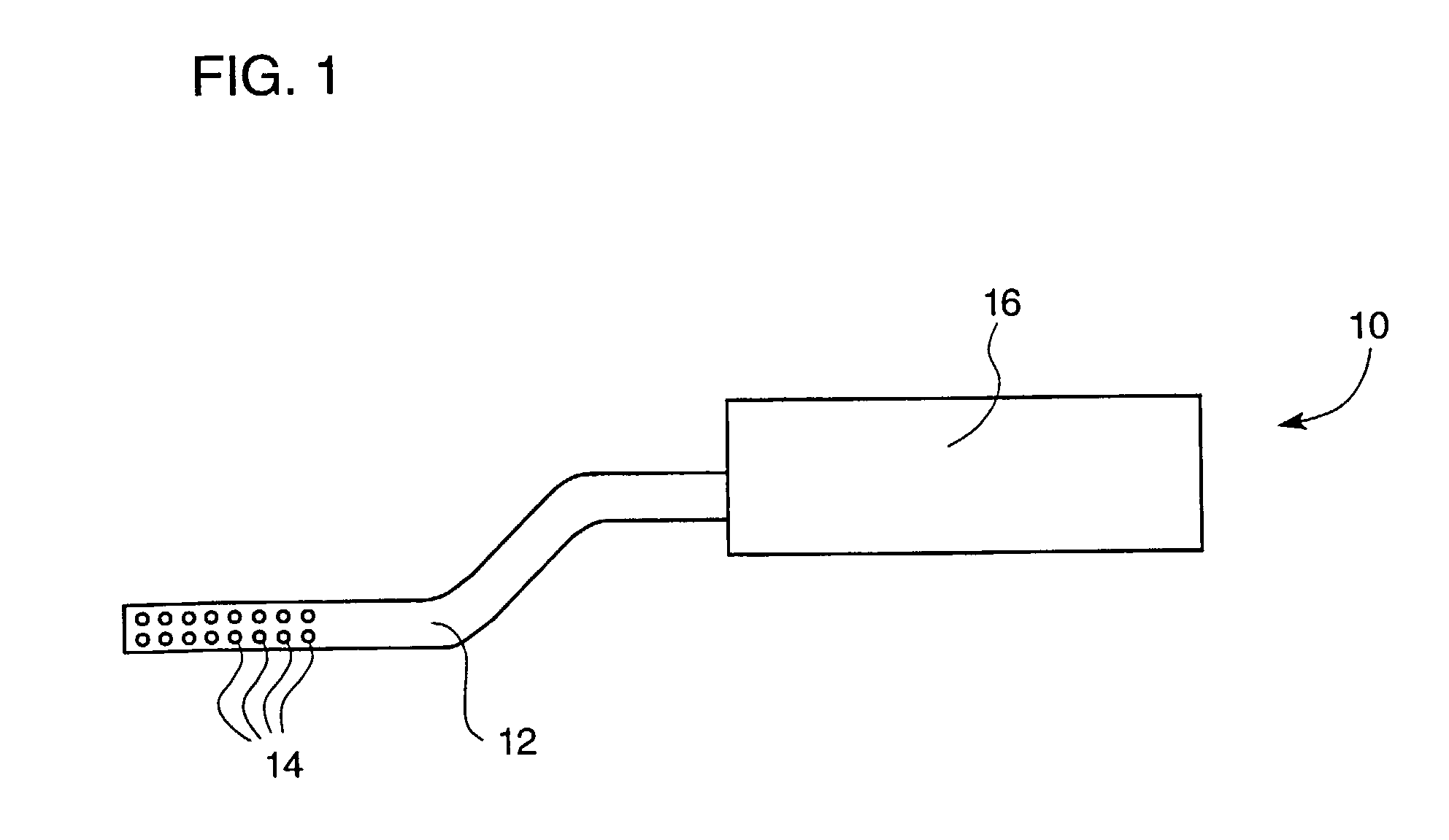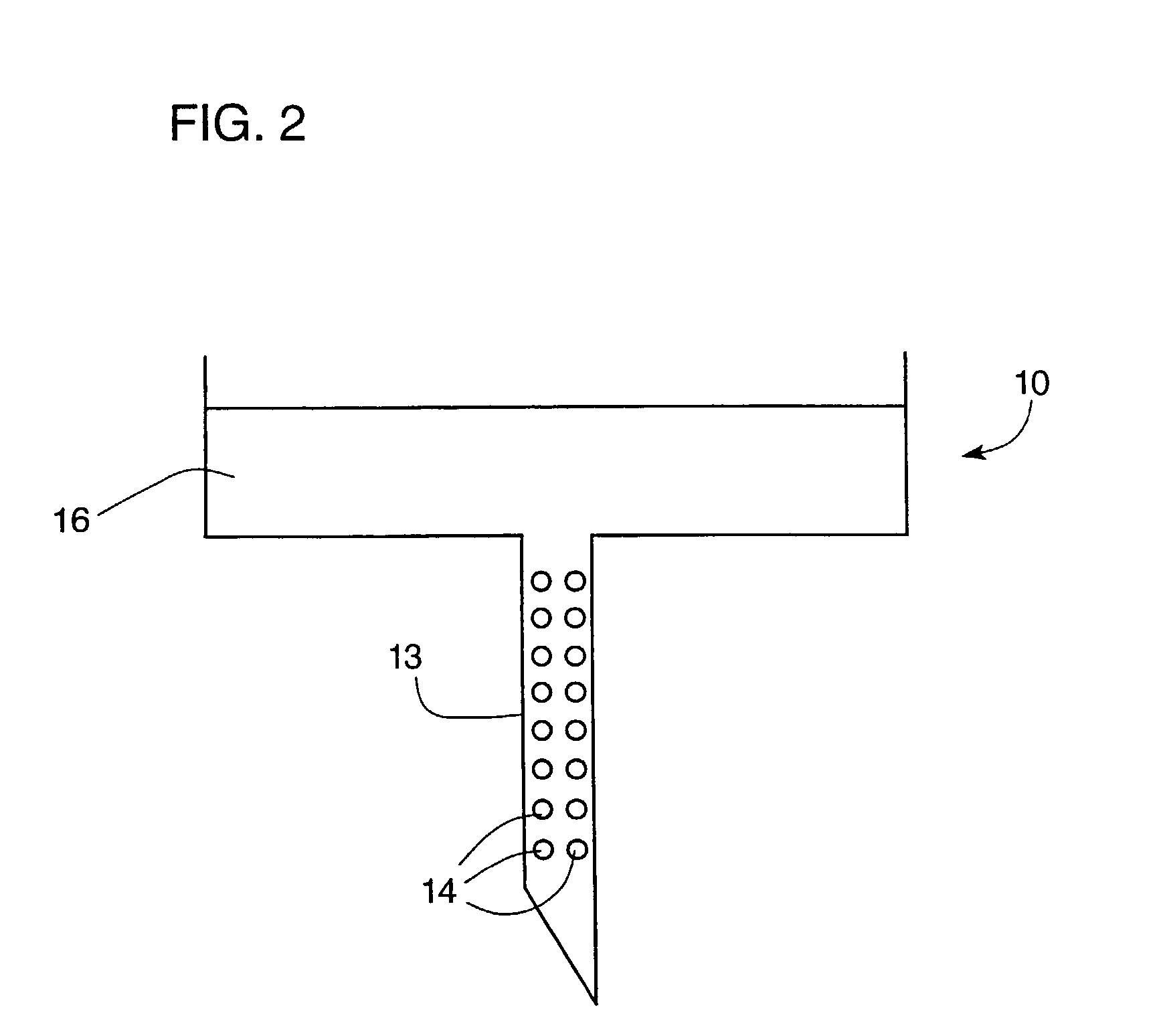Electroactive pore
a technology of active pores and pores, applied in the field of electroactive pores, can solve the problems of patients enduring inconvenience and risking regular exposure to toxic and ineffective plasma levels of drugs, and achieve the effects of promoting the maintenance of the concentration of a therapeutic agent, retaining maximum biological activity, and increasing convenien
- Summary
- Abstract
- Description
- Claims
- Application Information
AI Technical Summary
Benefits of technology
Problems solved by technology
Method used
Image
Examples
example 1
Coating a NUCLEOPORE7 Membrane with Platinum
[0128]A NUCLEOPORE7 membrane is pressed against the cooling plate of an Edwards S150B sputtercoater using a template with an opening that is slightly smaller than the diameter of the membrane. Platinum is then be applied to a thickness of 100–400 nm by sputtering under an argon pressure of 8 nBar and using a sputtering current of 50 mA. The thickness of the layer can be measured with an Edwards FTM5 unit.
example 2
Oxidizing Chemical Polymerization of Pyrrole
[0129]Pyrrole is polymerized in the pores of a NUCLEOPORE7 membrane (25 mm in diameter) by allowing about 4 ml of an aqueous 2 M FeCl3 solution and about 1 ml of an aqueous 0.6 M pyrrole solution to precipitate. This is carried out by positioning an injection syringe, which is filled with the iron chloride solution, vertically and mounting a standard membrane holder thereon. The membrane rests on the holder and can be weighted down with a rubber ring. The level of oxidizing iron (III) chloride solution in the syringe is raised until it just touches the membrane resting on the holder, and 1 ml of the pyrrole solution is applied to the membrane. The polymerization time is measured from the time this solution is applied. For NUCLEOPORE7 membranes having a diameter of 0.8 im and a pore density of 3×107 pores / cm2, the polymerization can be continued for 1–10 minutes, after which time the membrane can be removed from the holder and rinsed with w...
example 3
Immobilization of Glucose Oxidase
[0130]Enzyme is immobilized on members prepared as described in Examples 1 and 2, and having an original pore diameter of 800 and 1000 nm. For enzyme immobilization, such a platinum- and pyrrole-coated member can be added to about 4 ml of a 5 mg / ml solution of glucose oxidase and incubated with shaking on a Gyratory Shaker Model G2 (New Brunswick Scientific). The immobilization reaction is continued for at least 30 minutes at 4EC. The membrane (serving as the member) can then be rinsed in PBS (pH=6.5) and dried overnight at 4 EC. Drying takes place in a desiccator under normal pressure and in the presence of CaCl2.
PUM
 Login to View More
Login to View More Abstract
Description
Claims
Application Information
 Login to View More
Login to View More - R&D
- Intellectual Property
- Life Sciences
- Materials
- Tech Scout
- Unparalleled Data Quality
- Higher Quality Content
- 60% Fewer Hallucinations
Browse by: Latest US Patents, China's latest patents, Technical Efficacy Thesaurus, Application Domain, Technology Topic, Popular Technical Reports.
© 2025 PatSnap. All rights reserved.Legal|Privacy policy|Modern Slavery Act Transparency Statement|Sitemap|About US| Contact US: help@patsnap.com



